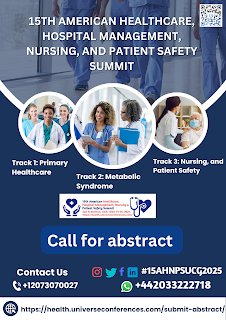Breast Cancer Pathology:-
Evaluation of Breast Disorders:-
More than 15 million doctor visits every year are attributed
to breast symptoms, such as lumps, nipple discharge, and soreness. Breast
cancer is always a concern even if > 90% of symptoms have benign causes. The
goal with all breast symptoms and discoveries is to definitively exclude or
confirm malignancy because breast cancer is frequent and can mimic benign
illnesses.
History includes the following:-
1.
The degree, kind, and duration of any pain or
discharge.
2.
Symptoms and menstruation in relation to
pregnancy.
3.
Skin alterations are present.
4.
Use of hormone treatment.
5.
Breast cancer history in both the personal and
family.
6.
Date and outcomes of the most recent mammography.
Breast Cancer
Pathology:-
The majority of breast cancers are ductal or lobular
epithelial tumours. Most individuals have an asymptomatic mass found during a check-up
or screening mammogram when they first arrive. Biopsy is used to confirm the
diagnosis. The standard course of treatment entails surgical excision,
frequently combined with radiation therapy, as well as adjuvant chemotherapy,
endocrine therapy, or both.
In the US, lung and bronchial cancer are the major causes of
cancer death for White, Black, Asian/Pacific Islander, American Indian/Alaska
Native, and Hispanic women, respectively. However, among Hispanic women, breast
cancer is the leading cause of cancer death. In the year 2021, there were
1.
281,550 new instances of breast cancer that is
invasive.
2.
It caused 43,600 deaths.
3.
49,290 new cases of breast cancer in situ.
Approximately 1% of all cases of breast cancer in men.
Invasive breast cancer saw 2650 new cases in the US in 2021, and the disease
claimed 530 lives. Although men typically arrive at a later stage, the
symptoms, diagnosis, and treatment are the same in men.
Risk Factors for Breast
Cancer:-
About 12 percent of American women will acquire breast
cancer over the course of their lifetimes. After age 60, a large portion of the
risk is assumed (see table Risk of Being Diagnosed with Invasive Breast
Cancer). By five years after diagnosis, the risk of breast cancer death is
approximately 10%.
Several elements may influence the risk of breast
cancer, such as:
1.
Age: The oldest age group has the highest risk
of breast cancer. Age at diagnosis is roughly 60 years old on average.
2.
History of Relatives: Breast cancer in more
distant relatives only modestly raises risk, but having a first-degree relative
(mother, sister, or daughter) with the disease doubles or triples the likelihood
of developing it. The risk may be five to six times higher if two first-degree
relatives have the disease.
3.
Breast cancer gene mutation: Between 5 and 10%
of breast cancer patients have a mutation in one of the two breast cancer
genes, BRCA1 or BRCA2. A BRCA1 mutation increases the risk of breast cancer by
around 72% and a BRCA2 mutation increases the risk by about 69% by the age of
80. A lifetime risk of ovarian cancer of about 44% is also present in women
with BRCA1 mutations, and a risk of about 17% in women with BRCA2 mutations.
Women do not need to be screened for BRCA1 and BRCA2 mutations if there is no
history of breast cancer in at least two first-degree relatives because it is
improbable that they will possess this mutation. A BRCA mutation in a man
increases his lifetime risk of getting breast cancer by 1 to 2%.
4.
Individual background: Risk is increased by
prior invasive or in situ breast cancer. Following a mastectomy, there is a 0.5
to 1% chance that the contralateral breast will develop cancer.
5.
History of gynaecology: Risk is increased by
early menarche, delayed menopause, or late first pregnancy. Women who become
pregnant for the first time after turning 30 are more vulnerable than
nulliparous women.
6.
Breast changes: A modest elevated risk is linked
to a history of lesions that required a biopsy. Women who have several breast
lumps but who do not have histologic evidence of a high-risk histology should
not be regarded as being at high risk. Patients who have atypical ductal or
lobular hyperplasia are at an elevated risk of 4–5 times the average risk, and
those who have a 1st-degree relative who has had invasive breast cancer are at
an elevated risk of 10 times the ordinary risk. A 1.2- to 2.1-fold greater risk
of breast cancer is linked to increased breast density seen on screening
mammography.
7.
Lobular carcinoma in situ (LCIS): The chance of
getting invasive carcinoma in either breast increases by roughly 7 to 12 times
in people with lobular carcinoma in situ (LCIS); invasive carcinoma occurs in 1
to 2 percent of LCIS patients each year.
8.
Oral contraceptive use: Research findings on
oral contraceptive use and breast cancer risk are conflicting. According to
several studies, recent or current users are at a slight elevated risk.
9.
Radiation therapy: The risk is increased if
radiation therapy is administered before age 30. Over the next 20 to 30 years,
the risk of breast cancer is almost quadrupled by mantle-field radiation
therapy for Hodgkin lymphoma.
10.
Diet: Although there isn't enough information to
make a firm conclusion about a specific diet's impact (such as one high in
fats), diet may play a role in the onset or progression of breast cancer.
Although there is no proof that changing one's diet lowers risk, obese
postmenopausal women are at a higher risk. Risk could be reduced for obese
women who start their periods later than usual.
11.
Lifestyle variables: Breast cancer risk may be
increased by drinking alcohol and smoking. Women are advised to give up smoking
and drink less alcohol. In epidemiologic research, drinking alcohol is linked
to an increased Breast Cancer risk.
Contact
Us:-
Reach out to us: https://breastcancerpathology.universeconferences.com/
Mail: pathology@universeconferences.com| info@utilitarianconferences.com |
breastcancer@ucgconferences.com
Whatsapp: +442033222718 Call: +12073070027
Previous
Blog Post Links:-
|
·
https://sites.google.com/d/1v0QVCF-ifAq0IPtcDk8JMsBPYrFegFEG/p/1hFJuxLcwhnKEJrppnLDTW5_9lytJwTf8/ |
|
·
https://medium.com/@BreastPathology/types-of-oncologists-6c8b518a730c |


.png)


Comments
Post a Comment